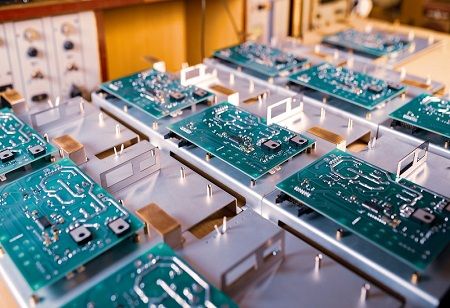
- Vietnam aims for independent chip design, production, and testing by 2027.
- PM Chinh urges unified efforts to build a robust semiconductor ecosystem.
- Vietnam plans to train 50,000 semiconductor engineers by 2030.
Prime Minister Pham Minh Chinh reaffirmed Vietnam’s aim to attain independence in the design, production, and testing of essential semiconductor chips by 2027 at the latest. PM Chinh, also the Head of the National Steering Committee for Semiconductor Industry Development, issued the call while wrapping up the committee's second meeting in Hanoi on August 4.
He put emphasis on the critical need to expedite the execution of the national strategy for developing the semiconductor industry and the associated initiative for training human resources, arguing for unified efforts across sectors to establish Vietnam as a global semiconductor center.
PM Chinh also noted that semiconductors are a core element of the 4th Industrial Revolution contributing importantly to the development of artificial intelligence and data infrastructure. Given the rapid development of this sector in the world, Vietnam cannot remain on the sidelines, he asserted.
He reiterated that the Party and the State have issued a number of strategic guidelines and frameworks to create an environment for investment and to bolster the development of the semiconductor industry specifically. The Government and the Prime Minister have put in place and implemented important strategies and directions aimed specifically at development in the sector.
The PM praised the efforts of ministries, localities, academic institutions, and businesses, which have established the foundation for the semiconductor industry’s growth and created new drivers of economic expansion. He observed that these initiatives are also propelling advances in science, technology, innovation, and digital transformation.
However, he recognized that the sector continues to encounter major challenges, such as restrictions in capital mobilization, regulatory structures, infrastructure enhancement, technology sharing, availability of skilled workers, and coordination among sectors.
To meet the national goals, the PM instructed ministries, sectors, and localities to sustain progress in carrying out the tasks and solutions specified in the Semiconductor Industry Development Strategy through 2030, with a perspective towards 2050, alongside the Human Resources Development Programme for the Semiconductor Industry. He emphasized that essential tasks need to be finished by 2025 to establish a strong basis for meeting workforce development objectives before 2030.
PM Chinh emphasized the importance of developing a cohesive, coordinated, and effective semiconductor ecosystem. This involves enhancing policy and legal frameworks, especially incentive systems, while eliminating structural constraints linked to infrastructure, governance, and personnel capability.
Also Read: Japan eyes bigger role in Gujarat's semiconductor, EV push
The Semiconductor Industry Development Strategy consists of 38 initiatives and assignments distributed among 10 ministries. Out of these, 10 have been finished on time, 24 are underway, and four are scheduled for later execution.
Ten months post the strategy's adoption, ministries and localities have focused on formulating implementation mechanisms and launching ecosystem-building efforts following the first phase roadmap. Regarding human resource development, nine of the 34 assigned tasks have been completed, while the other 25 are in progress and on schedule.
Frameworks for institutions and policies related to the semiconductor sector are being updated to address development needs. Training for human resources is being intensified, aiming to educate a minimum of 50,000 semiconductor engineers by the year 2030.

